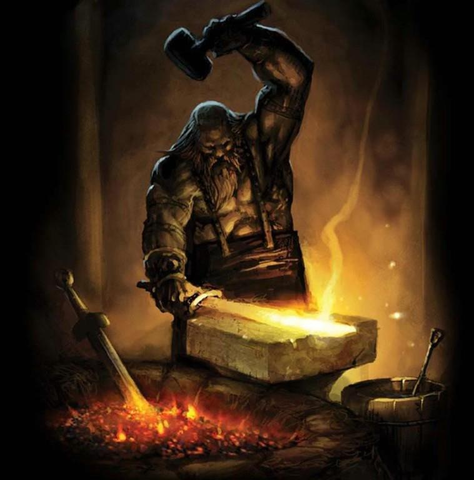- Thread starter
- #21
Steel is steel but they all don't feel the same. My Japanese razors are way harder and stiffer than my Shefields. I'm more curious about vintage razors and how they compare.
True but we're not talking forged vs cast razor blades here. In this case, we're talking about blades that are stamped from a roll of steel and then have an edge put on them. There is little to no different from one steel to another, be it German, Japanese, American, Israeli, Sweedish or Chinese.

And how do you think that steel got to be in its plate/flat bar roll to be stamped, it was cast or forged.True but we're not talking forged vs cast razor blades here. In this case, we're talking about blades that are stamped from a roll of steel and then have an edge put on them. There is little to no different from one steel to another, be it German, Japanese, American, Israeli, Sweedish or Chinese.
The folding of the steel is used to make denser, harder, more resilient steel. It wasn't a process exclusive to the Japanese, look up Damascus steel. Japanese and Damascus steel that is centuries old is still better than a lot of what we can make today, and is difficult for us to recreate, and in some instances there are formulas that couldnt be recreated. And even if the process was used to give it better edge holding abilities, wouldn't automatically make it bad steel. Steel springs in high performance suspension applications on cars are pretty good steel, but I wouldn't want to make a knife or razor from it. Kevlar is plastic, trash bags are plastic, but they dont make ballistic vests from trash bags, and they don't make them from a single layer, they're woven and layered.Granted that I may be wrong. Far wrong....................
But along the way watching the History and the Discovery Channels and the like, I thinkI heard that native Japanese Iron/Steel was crap.
And to make up for the poor quality, if you needed a dependable and sharp blade, the steel needed to be folded many times to make a functional blade.
Kinda like the differnce in quality between US of A and Canadian oil compared to the stuff from overseas. They have much, much more oil than we do but the oil from this continent is better in some way.
The folding of the steel is used to make denser, harder, more resilient steel. It wasn't a process exclusive to the Japanese, look up Damascus steel. Japanese and Damascus steel that is centuries old is still better than a lot of what we can make today, and is difficult for us to recreate, and in some instances there are formulas that couldnt be recreated. And even if the process was used to give it better edge holding abilities, wouldn't automatically make it bad steel. Steel springs in high performance suspension applications on cars are pretty good steel, but I wouldn't want to make a knife or razor from it. Kevlar is plastic, trash bags are plastic, but they dont make ballistic vests from trash bags, and they don't make them from a single layer, they're woven and layered.
I wasn't trying g to come off like a jerk, just kind of tact deficient lately, lolIn self defense, I did indeed state that I could have been very wrong on this subject,
Hence I bow to your superior knowledge!
I've been asking myself the very same question. I have some experience of Swedish razors but none whatsoever of Japanese razors.
Same here.To those guys who hone, how do the Swedish and Japanese razors compare on the stones?
True but we're not talking forged vs cast razor blades here. In this case, we're talking about blades that are stamped from a roll of steel and then have an edge put on them. There is little to no different from one steel to another, be it German, Japanese, American, Israeli, Sweedish or Chinese.
To those guys who hone, how do the Swedish and Japanese razors compare on the stones?
Up until, I think - the 1970s, the majority of Boker razors were forged from English bar steel that was specially formulated for razors. Boker's use of that specific imported material was a choice, not an accident or something done because all steels are the same.
Any experience with Parkers by chance? They seem like a less expensive way to get into Japanese Western-style razors than something like a Tanifuji, but I have no idea what the characteristics of the different Japanese brands are.When you're talking about specific brands, smiths, grinds and styles then you can nitpick. Until then, the field is pretty broad and it's hard to say this is like this, or that is like that.
IMO - both need way more attention than a Sheffield or Solingen. Both are, usually, hardened to a higher degree. Some steels, like - for example - some batches of Yasuki - can be pretty pesty to get a smooth edge on. Other go easy peasy. 1960s Aogami Kamisori can hone so easy it's not funny. Some later issue Shirogami Kamisori will fight you like a rabid tiger.